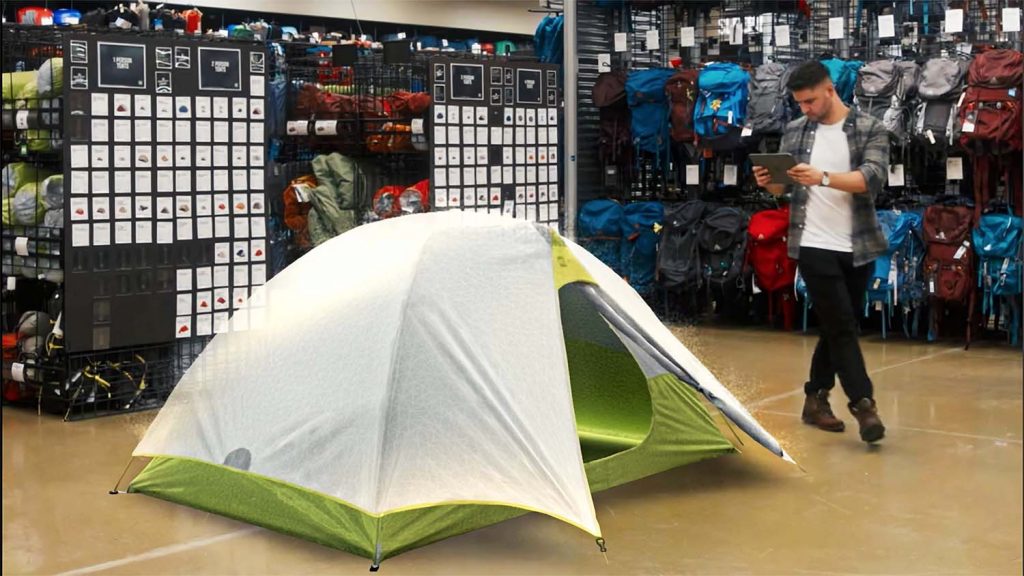How do camping stores, like MEC, Canada’s go-to place for outdoor gear, showcase their tents without taking up a space the size of a small festival?
This was a problem for the vendor, which wanted to be able to unpack, erect and showcase its vast range of tents without taking up all their store’s footprint.
MEC partnered with digital agency Finger Food to co-develop a solution using an augmented reality app that could be deployed in-store, but with multiple brands stocked, it would be too difficult to create 3D models from CAD data.
Using its proprietary photogrammetry rig and Microsoft Azure-powered data processing pipeline, Finger Food captured the 3D geometry of all the MEC tents in hundreds of photographs taken from every conceivable angle.
Capturing translucent canopy mesh and thin poles was a challenge, with the team developing proprietary techniques were to facilitate the capture.
To increase graphical performance on mobile devices, Finger Food’s team of designers created an optimised UV-map with fewer and less visible seams.
The UV map determines how 2D textures are projected onto the tent, creating a fully coloured, photo-realistic model, with material properties such as transparency, glossiness and metallic effects added manually to maximise the realism of each object.
The culmination of the project was the launch of an AR-based iPad application, that utilises AR Kit, Microsoft Azure and Unity to bring the tents to life.
The MEC tent app is designed to create a seamless highly visual customer experience that bring tents to life, allowing customers to get a sense of scale (just how big is that six-man tent?) and even climb inside.
The app has even been expanded for use on Microsoft Hololens, allowing customers to quickly make tent buying decisions, without necessarily having to set foot in the MEC store.






